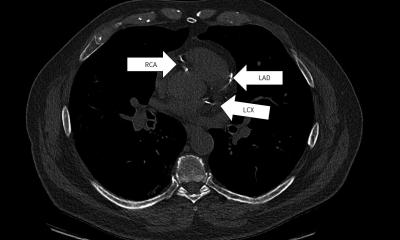Respiratory diseases
From burden to therapy. By Andrea Rossi MD, Director of the Respiratory Division at Bergamo General Hospital Bergamo, Italy, and Chair of the Scientific Committee of the European Respiratory Society

Thousands of diseases challenge human survival on our planet. However, a few of these represent a major cause of mortality and morbidity worldwide. Respiratory diseases are among the leading health problems for human beings. In particular, respiratory tract infections, including tuberculosis and lung cancer, account for a large portion of human suffering and death. Chronic inflammatory disorders of the airways, such as bronchial asthma in infants and chronic obstructive pulmonary disease (COPD) in adults, embody the highest prevalence, respectively, in Europe. The former is mainly related to the ‘allergy march’, whereas the latter is strongly related to tobacco consumption, though other factors such as occupational and environmental pollution also significantly contribute to the overall prevalence. It has been estimated that the total financial burden of lung diseases in Europe amounts to nearly €102 billion.
The prevalence of COPD is rising worldwide, and it has been estimated that, in 2010, COPD will be the 4th leading cause of death in Europe, immediately after cardiovascular diseases and lung cancer. Asthma is the most common chronic disorder in children in Europe. There is no fundamental therapy for asthma. However, inhaled corticosteroids are effective to control symptoms and to reduce the risk of exacerbations substantially. Inhaled bronchodilators are also helpful.
In COPD, smoking cessation is the most effective measure to slow down the progression of the disease. However, the inflammatory process does not reverse after smoking cessation. Therefore a treatment for COPD is needed. Regular therapy with long acting inhaled bronchodilators is effective to reduce dyspnoea, as well as to improve exercise tolerance. The addition of inhaled corticosteroids may help to reduce the frequency and severity of exacerbation in severe patients.
Although available asthma and COPD treatments, inhaled corticosteroids and long acting bronchodilators respectively, are effective to reduce symptoms and to improve the quality of life, the lack of a real, prime therapy for those diseases stimulates a lot of basic and clinical research aimed to elucidate the fundamental bio-cellular mechanisms as well as to find new drugs active at that level. It should be mentioned that both asthma and COPD are widely under-treated because they are under-diagnosed due to the limited use of spirometry as a diagnostic tool. Spirometry should become part of the routine assessment of health status.
A major problem in clinical respiratory medicine is acute respiratory failure; namely hypoxemia often associated with hypercapnia and respiratory acidosis. An extraordinary advance in the management of acute respiratory failure is a worldwide success, as well as the use of non-invasive positive pressure ventilation (NPPV). This is a mode of artificial ventilation that does not require endotracheal intubation, because mechanical assistance is delivered through a face mask. NPPV dramatically reduces mortality in critically ill patients because it decreases the frequency and severity of complications, particularly infections, associated with the endotracheal tube. NPPV can be delivered in the intensive care unit as well as the ward for less severe patients (pH <7,30).
Although there are some promising prospectives and new treatments are under evaluation, the mortality remains high for patients with lung cancer and for patients with interstitial lung disorders. There is a lot of effort in those areas, but until now success is minimal.
In conclusion, respiratory diseases are among the leading causes of mortality and morbidity in Europe as well as worldwide. There is a need for more basic research as well as for more epidemiological data. Some effective treatments are available and they should be more widely used. New, more effective therapies are expected in the next years.
03.08.2006









